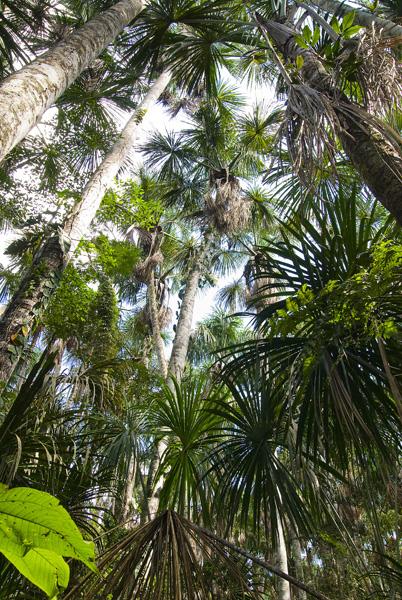Background

The commercially important, tropical palm Mauritia flexuosa is found in wetlands (Aguajales) and flooded habitats throughout northern South America. Subsistant and commercial trade of the nutritious fruits play a crucial role for local and regional economics. The fruits are one of the richest natural sources of beta carotene and may have enormous potential in preventing vitamin A deficiency in Latin America and elsewhere. The fruits are used to make juice, jam, and ice cream, fermented into a “wine” or dried into flour. However, unsustainable harvesting techniques have increased the pressure on wild populations. At least 1000 palms are estimated to be cut down every month just in the northern parts of Peru.
Wild stands of the palm support a diverse ecological community. The fruits are eaten by macaws, parrots, tapirs, peccaries, fish, turtles, and monkeys. The fruits represent a dominant food resource for lowland tapir (Tapirus terrestris) . Mauritia f. is also an important nesting place for many bird species, such as the blue-and-yellow macaw (Ara ararauna).
My aim was to study:
1. Seed survival in the Aguajal
2. Seed predators on dry land
3. Insect visitors and consumers
4. Germination in greenhouse experiments
The fieldwork was conducted at Estacion Biologica Cocha Cashu in Manu National Park in Southeastern Peru, South America. One experiment was set up to attend each of the four aims.
Responsible for this page:
Director of undergraduate studies Biology
Last updated:
05/11/09
